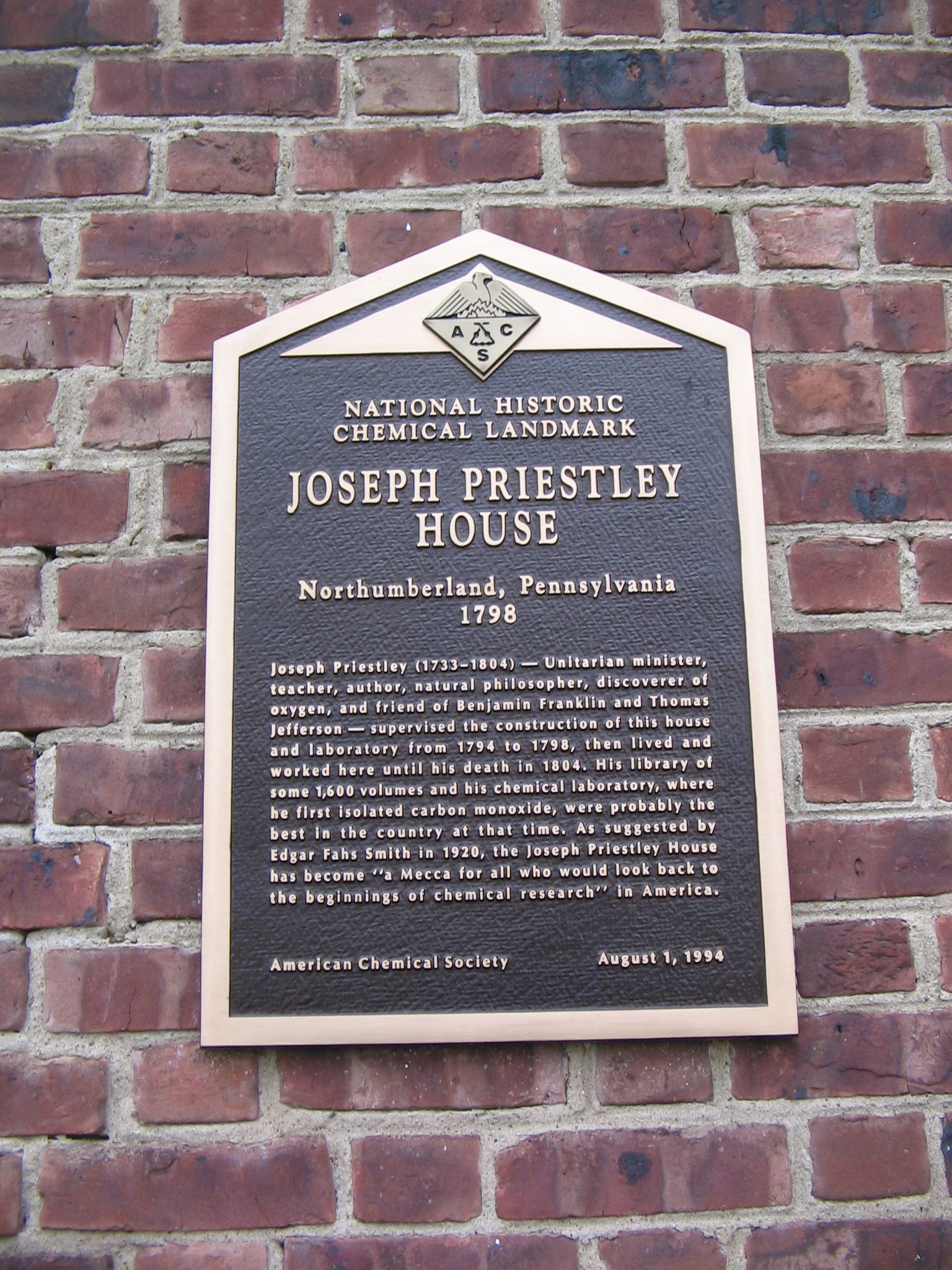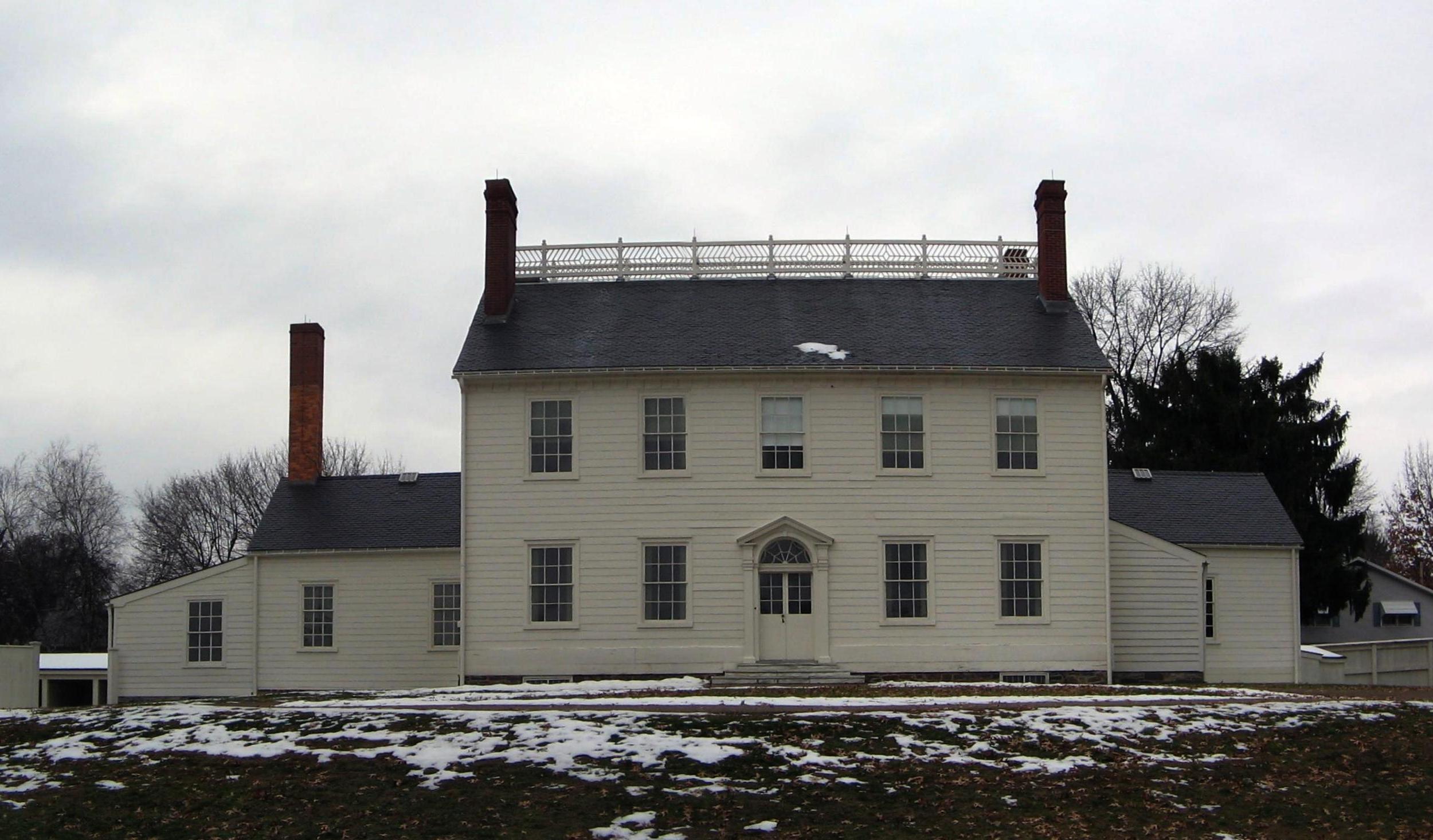ACS National Historical Chemical Landmarks
 From Wikidoc - Reading time: 6 min
From Wikidoc - Reading time: 6 min


Editor-In-Chief: C. Michael Gibson, M.S., M.D. [1]
The ACS National Historic Chemical Landmarks Program was launched by the American Chemical Society in 1992 and has recognized 60 landmarks to date. The project is part of the ACS Division of the History of Chemistry and has the aim of compiling "an annotated roster for chemists and chemical engineers, students, educators, historians, and travelers."
List of landmarks[edit | edit source]
1993[edit | edit source]
1994[edit | edit source]
- The Chandler Chemistry Laboratory at Lehigh University in Bethlehem, Pennsylvania
- The Joseph Priestley House, Pennsylvania home of Joseph Priestley, discoverer of oxygen
1995[edit | edit source]
- Atomic weight of oxygen calculated by Edward Morley
- Coal as a source of acetyl chemicals for plastics materials and fibers rather than petroleum
- First nylon plant, built by DuPont, at Seaford, Delaware
- Riverside Laboratory at Universal Oil Products
1996[edit | edit source]
- The Sohio Acrylonitrile production process
- Houdry process for the selective conversion or catalytic cracking of crude petroleum to gasoline
- Kem-Tone water-based or latex paint developed by Sherwin-Williams chemists
- Williams-Miles History of Chemistry Collection housed at Harding University in Searcy, Arkansas
1997[edit | edit source]
- Hall-Héroult process for the industrial production of aluminum by electrochemistry discovered in 1886 was demonstrated by American chemist Charles Martin Hall and independently in the same year by French chemist Paul Héroult
- First electrolytic production of bromine by Herbert Henry Dow at the Evens Mill in Midland, Michigan
- Gilman Hall at the University of California, Berkeley
- Radiation chemistry commercialized
1998[edit | edit source]
- Commercial processes for making calcium carbide and acetylene accidentally discovered in 1892 by Thomas Willson
- Fluid bed reactor for petroleum cracking in gasoline production
- Havemeyer Hall at Columbia University
- Raman Effect discovered by Indian physicist Chandrasekhara Venkata Raman
- Synthetic rubber developed by the United States Synthetic Rubber Program (1939–1945) to
- Development process for Tagamet used for treating ulcers at SmithKline Beecham Pharmaceuticals
1999[edit | edit source]
- The discovery of penicillin
- Physostigmine (used for the treatment of glaucoma) synthesis first accomplished at the Minshall Laboratory, DePauw University by African American chemist Percy L. Julian
- Progesterone synthesis from a Mexican yam developed by Russell Marker in a process known as Marker degradation and Mexican steroid industry
- The foundation of polymer science by Hermann Staudinger
- Polypropylene and high-density polyethylene discovered by J. Paul Hogan and Robert Banks working at Phillips Petroleum Company
- Separation of rare earth elements by Charles James at the University of New Hampshire
- Work of French scientist Antoine Lavoisier, who elucidated the principles of modern chemistry
2000[edit | edit source]
- Bowood House in Wiltshire, U.K. site of Joseph Priestley's discovery of oxygen in 1774
- Edgar Fahs Smith Memorial Collection at The University of Pennsylvania
- The discovery of helium in natural gas by Hamilton Cady and David Ford McFarland while working in Bailey Hall at The University of Kansas on a sample from a gas well in Dexter, Kansas in 1905
- Isolation of organic free radicals by University of Michigan chemist Moses Gomberg in 1900
- The establishment of modern polymer science by Wallace Carothers
- Protein and nucleic acid chemistry at Rockefeller University
- Discovery of transcurium elements at E. O. Lawrence Berkeley National Laboratory at the University of California, Berkeley including berkelium (97), californium (98), einsteinium (99), fermium (100), mendelevium (101), nobelium (102), lawrencium (103), rutherfordium (104), dubnium (105), and seaborgium (106)
2001[edit | edit source]
- Savannah Pulp and Paper Laboratory founded by Georgia chemist Charles H. Herty, Sr. who discovered a method to make quality paper from southern pine trees in 1932
- National Institute of Standards and Technology, (NIST)
- The commercialization of aluminum by the Pittsburgh Reduction Company (Aluminum Company of America) in 1888 that used the elctrochemical process discovered by Charles Martin Hall
- The founding of the American Chemical Society in 1876 and its first president John William Draper
2002[edit | edit source]
- African-American engineer Norbert Rillieux, inventor of the multiple-effect evaporator (1934) and a revolution in sugar processing giving better quality with less manpower and at reduced cost
- Hungarian chemist Albert Szent-Györgyi and the discovery of Vitamin C which he proved was identical to the hexuronic acid that could be extracted in kilogram quantities from paprika
- Noyes Laboratory: One Hundred Years of Chemistry
- Alice Hamilton and the development of occupational medicine that helped make the American workplace less dangerous
- Quality and stability of frozen foods made possible by the research of the Western Regional Research Center after World War II that investigated how time and temperature affected their stability and quality
2003[edit | edit source]
- The discovery of the life-saving anticancer agents Camptothecin (1966) and Taxol (1971) obtained from the Chinese Camptotheca acuminata and the Pacific yew tree respectively at the Research Triangle Institute (RTI) by the research team of Monroe Wall, Mansukh C. Wani, and colleagues
- The Polymer Research Institute at the Polytechnic University of New York, established in 1946 by Herman Mark, the first academic facility in the United States devoted to the study and teaching of polymer science
- The development of high-performance Carbon fibers by scientists at the Parma Technical Center of Union Carbide Corporation (now GrafTech International)
2004[edit | edit source]
- The Beckman pH meter, developed by Arnold Orville Beckman while a member of the faculty of the California Institute of Technology, the first commercially successful electronic pH meter
- The evolution of durable press and flame retardant cotton by the Southern Regional Research Center that made cotton more competitive with synthetic fabrics
- Carl Ferdinand Cori and Gerty Cori and their research that led to our current understanding of the metabolism of sugars or the "Cori cycle" by which the body reversibly converts glucose and glycogen
2005[edit | edit source]
- George Washington Carver who, despite being born into slavery, went on to join the faculty of Tuskegee Institute in 1896 where he developed new products including peanuts and sweet potatoes and researched crop rotation and the restoration of soil fertility
- Selman Waksman, who isolated antibiotics produced by actinomycetes, including streptomycin which was the first effective pharmaceutical treatment for tuberculosis, cholera and typhoid fever, and neomycin used as a topical antibacterial agent
- The development of the Columbia dry cell battery, the first sealed dry cell battery successfully manufactured for the mass market by the National Carbon Company (predecessor of Energizer) in 1896
2006[edit | edit source]
- Neil Bartlett's demonstration of the first reaction of a noble gas by combining xenon with platinum fluoride
- Rumford baking powder, developed in the mid-19th century by the Harvard University Benjamin Thompson Professor Eben Horsford by adding calcium acid phosphate, to make baking easier, quicker, and more reliable
- The development of Tide, the first heavy-duty synthetic laundry detergent, by Procter & Gamble chemists working at the Ivorydale Technical Center in 1946 by adding the "builder" sodium tripolyphosphate
2007[edit | edit source]
- Food dehydration technology.
- Chemical Abstracts Service.
External links[edit | edit source]
Licensed under CC BY-SA 3.0 | Source: https://www.wikidoc.org/index.php/ACS_National_Historical_Chemical_Landmarks42 views | Status: cached on September 28 2025 06:20:23↧ Download this article as ZWI file
 KSF
KSF